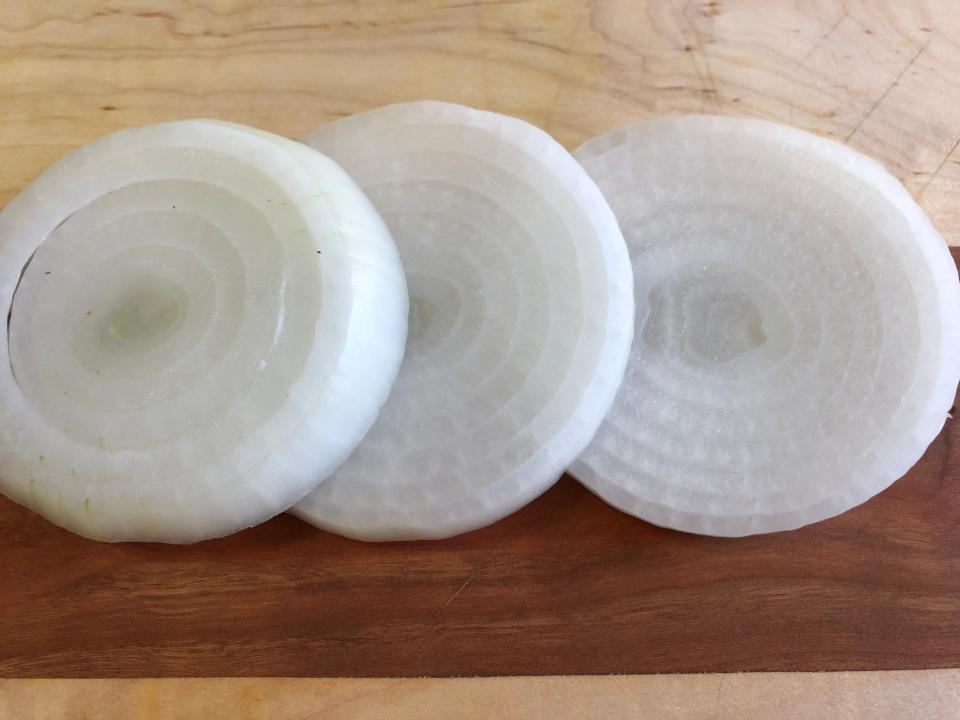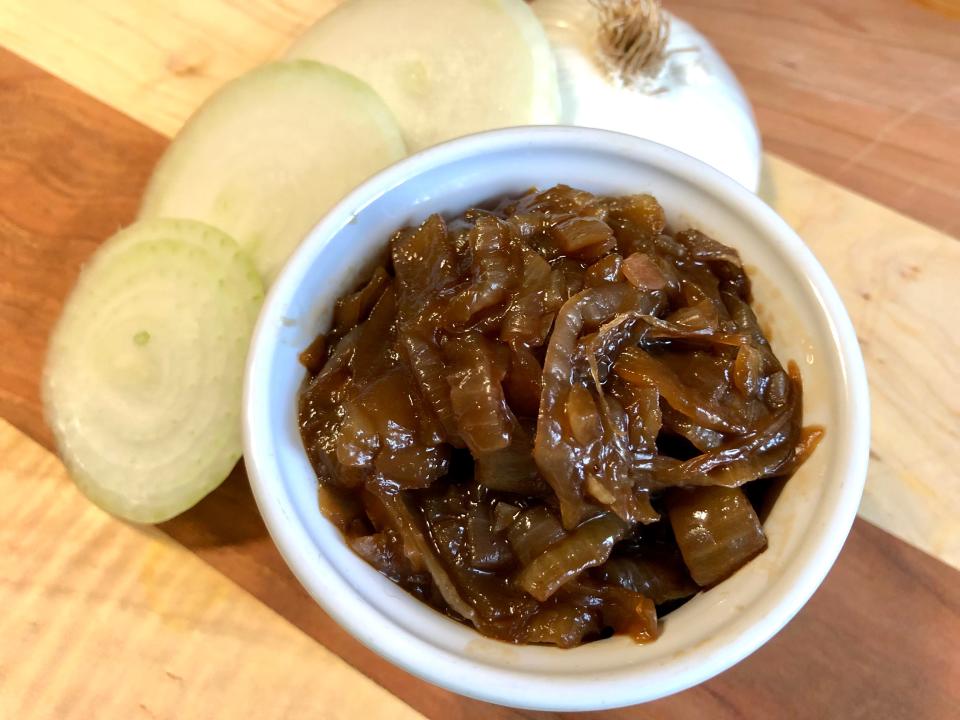Make onion marmalade for hamburgers, dips, charcuterie board and more
Around the world, onions usually are part of the opening act for savory recipes.
Why are onions so universal?
Truth be told, I can't find a straightforward, simple answer.
What I do know is that after many years of being a more attentive cook, a meat-heavy beef dish, soup or stew seems to be lacking "something" if I omit that first step of sautéing onions in a fat.
Three tips for using raw onions
Onions vary in pungency and sweetness, so mastering their use in the raw state takes trial and error.
As a general rule, white onions tend to be the strongest in flavor, while yellow can be sweeter. Red onions tend to be less abrasive, and some varieties of red are sweeter than yellows.
In my younger days, I was a "hold the onions" cheeseburger eater. So imagine my aghast look the first time I saw my father-in-law pull a small, white onion from a garden row, wash it, trim the outer leaves and eat it raw.
"Marvelous," he would say about the treat.

I haven't warmed up to such marvelous moments, but I have developed an adeptness at using raw onions in dishes. Imagine a pico de gallo or salsa without a dose of freshly diced white onion. It would be a ho-hum experience, even for the tortilla chip.
Here are three tricks I use to tame raw onions:
► Chop the onion finely. When making a dip, pico de gallo or salsa, cut the onion about the size of the ingredients in a pickle relish. Smaller pieces will be less upfront in a bite.
► Break out the box grater. If a potato, broccoli, tossed or pasta salad calls for raw onion, grate it. The flavor of a grated onion diffuses throughout the mixture more easily, avoiding getting a full kick of a diced onion.
► Start off with less onion. Shortchange a recipe of the listed amount of onion and taste as you build the dish. You can always add more.
Multiple uses for onion marmalade
Cooking tames the abrasiveness of raw onions, releasing a pleasing aroma. It also caramelizes the natural sugars for a sweetness not obviously possible in the raw state.
The following recipe for onion marmalade shows that caramelized onions can be the star of a dish.
The recipe is inspired by a version from Julee Rosso in her cookbook "Great Good Food" (1993). My changes include adjusting the ingredient proportions, substituting beef broth for the chicken variety and adding salt.
Some marmalade recipes call for adding sugar, but a healthier option is a quality balsamic vinegar. Such a vinegar is naturally sweet from a process that starts with cooking down whole sweet grapes and fermenting the mixture over time.
Another appeal of Rosso's recipe is that the onion slices are sautéed in broth instead of oil, lowering the calorie count.
Don't let the almost three-hour cooking time keep you from trying the marmalade. It can be cooked on a back burner and checked regularly while you prepare, serve and clean up after a meal. And, the mixture will stay safe in the refrigerator for a week.
An onion marmalade is a versatile condiment. Try it in the following ways, or let this list inspire you to add it to your own mealtime standbys.
► Replace the onion slices on a hamburger.
► Include on a charcuterie board.
► Add to a deli-meat sandwich.
► Spread on crostini slices, along with whipped cream cheese and capers.
► Make a dip by blending 1/2 cup onion marmalade with 1 1/4 cups sour cream and 3/4 cup mayonnaise. Season to taste with granulated garlic and a season-all spice blend.

More: Flourless peanut butter cookie may be better than typical version
Share your favorite recipes or food-related historical recollections by emailing Laura Gutschke at laura.gutschke@reporternews.com.
Onion Marmalade
Adapted from recipe in "Great Good Food" (1993) by Julee Rosso
Ingredients
1/4 cup beef broth
8 cups thinly sliced yellow onions (about 6-8 large onions)
Salt to taste
3 tablespoons balsamic vinegar
Directions
1. In a heavy bottom skillet (or enamel-coated Dutch oven), warm the broth over medium-high heat. Add the onion slices and a fat pinch of salt, cover and cook until translucent and very soft, about 45 minutes. If necessary, reduce the heat to avoid scorching. Stir occasionally.
2. Uncover, lower the heat and simmer for 1 hour, stirring periodically.
3. Add the vinegar and cook until the onion is caramelized, about 1 hour longer. Use immediately, or store in a container in the refrigerator for up to seven days.
Laura Gutschke is a general assignment reporter and food columnist and manages online content for the Reporter-News. If you appreciate locally driven news, you can support local journalists with a digital subscription to ReporterNews.com.
This article originally appeared on Abilene Reporter-News: Make onion marmalade for hamburgers, dips, charcuterie board and more
